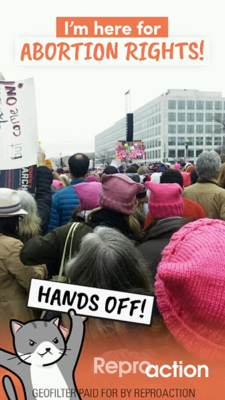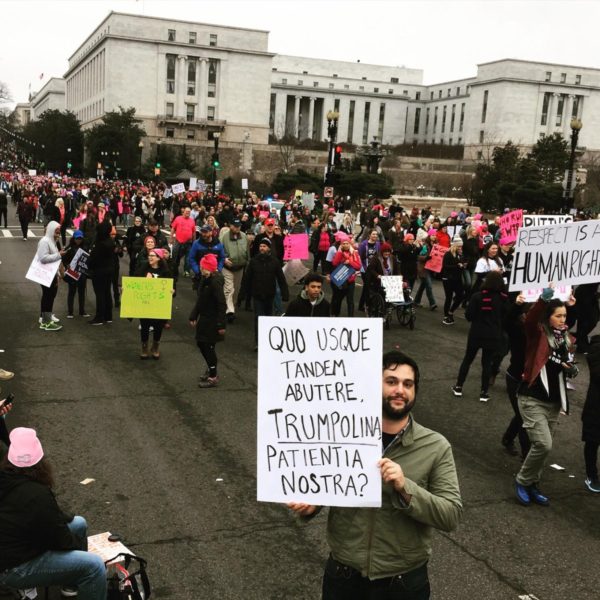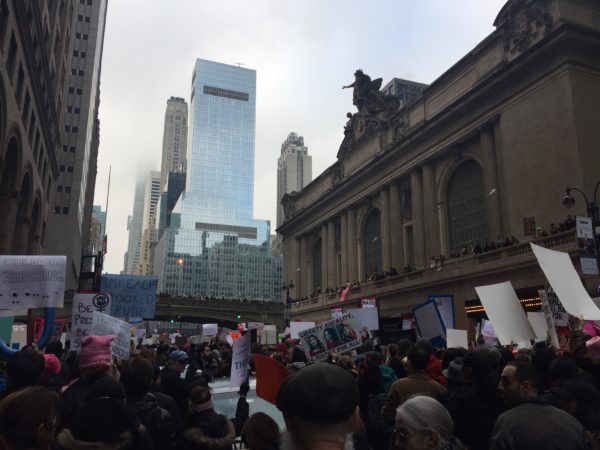If we’ve learned anything over the past two weeks, it’s that protests are the new normal. Between the Women’s March, spontaneous airport protests, the upcoming Trump Taxes March, the March for Science, Pride, the Immigrants March, and many local efforts others planned across the country, mass demonstrations have gained new currency in American politics. Here are tips for nonprofits to get in action – effectively and with respect:
1. Tread lightly
Remember: you are there to create a movement, not to hijack one. Your supporters should certainly come prepared with unified chants, signage, and calls to action. But they should not try to drown out others.
For example, we encountered several anti-abortion groups that screamed at marchers for “ruining the American family.” Strategically, this did nothing for their cause – other than to cause feminists to dig in their heels deeper and possibly even fan the flames for a violent encounter.
Likewise, I often recall the experience a decade ago of attending a candlelight vigil for the victims of the Iraq War. In the middle of a moment of silence, a group unfurled a huge “Free Palestine” flag and began chanting. The approach certainly alienated more people to their cause than it converted.
What impressed me most about the Women’s March was it’s thoroughly grassroots nature. Unlike some protests, which can feel overly choreographed by special interest organizations, the marchers we saw in DC and NYC clearly showed up for reasons that were deeply personal and remarkably varied.
2. Stick together
The groups of nurses and teachers we saw at the Women’s March were extremely effective. By marching together, they communicated the beautiful diversity of their coalition; men and women of all ages and races had the same message. They advocated for clear positions (e.g. denying the nomination of Betsy DeVos for Secretary of Education or upholding the Affordable Care Act). And they did this with the utmost appearance of grace and dignity.

3. Get social
Organizers and supporters love a good physical sign, but we’ve also seen organizations moving into the world of digital, shareable signs, such as Snapchat filters, Facebook profile picture templates, and other creative approaches. Many of these tools can be geotargetted, so you can direct your efforts to areas where folks might need a little more support.
Besides just your organization’s name and branding, it’s important to incorporate key messages or calls to action in your template. When your template is message driven you’re providing protesters with a tool, rather than just promoting your organization (see #1). Use these tools to elevate activist voices.

4. Know your niche
Sacha Evans from the DG+CO team marched with her husband, whose Latin sign translated to: “Mr. Trump, how much longer will you abuse our patience?” It was a somewhat obscure reference to the first line of Cicero’s In Catilinam, which he picked up from a book by the British Classicist Mary Beard.
The truth is: no one in-person seemed to understand it. We didn’t get any compliments of “nice sign.” But later on, he tweeted the sign at Mary Beard (who has more than 119,000 followers). She retweeted the sign and published it on her Times Literary Supplement blog.
Just like that, the sign went viral among classics scholars. We received notes from friends across the country who said they had seen his sign posted on people’s Facebook pages. It was just a matter of getting in front of the right audiences. Nonprofits can create a similar second life for their protest materials, by sharing them on social media with the right influencers.
5. Let supporters express their individuality
Recent marches were remarkable for lots of reasons. For many participants, perhaps the most stand-out feature was the incredible array of diversity in the signs that marchers carried. From humorous to somber, the reproductive rights-focused to those that promised solidarity with immigrants, it was fun just to be there and read about what was on everyone’s minds. But, beyond just fun, there’s an organizing tactic at play here: by encouraging sign-making parties and not simply handing out branded, pre-fab posters for marchers to carry, groups that joined the march allowed their supporters to be unique while joining together.

6. Be part of the follow-up
It’s fun to sing “kumbaya” with a bunch of likeminded people, but for a protest movement to have an impact, the follow-up is what counts. The day after the Women’s March, the organizers announced “100 Actions in 10 Days.” Nonprofits who can incorporate their action steps here will have the greatest chance of moving the needle. Connect with the event organizers about this early, and keep at it. There are other resources, like this Indivisible Guide that are worth getting into.
Any thoughts on how nonprofits effectively incorporated their work into recent demonstrations? Email us at hello@douglasgould.com.